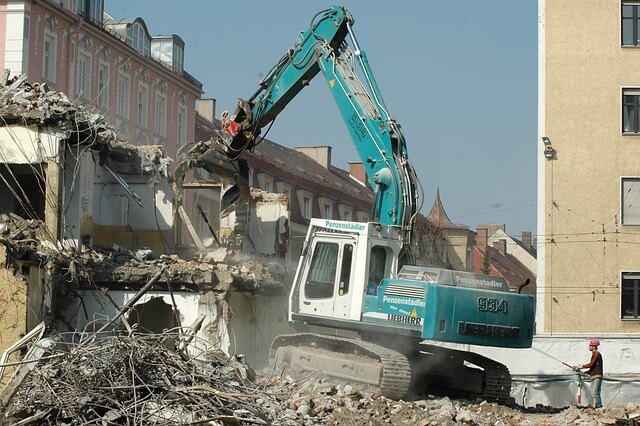We all fall in love with the marvels created by architectural designs. From the Burj Khalifa in Dubai to other architectural buildings dotting different parts of the world; these designs serve as inspiration in several ways.
However, when we go back in time, it is easy to see that some of these might not have been achieved if lessons weren’t learned. The history of architecture is marked with instances of designs that failed.
As an architect or one who has a huge interest in this field; it’s imperative to understand some of these architectural failures, so you don’t make similar mistakes.
What is Architectural Design Failure?
It refers to the non-realization of the major goal for setting the task of putting up an architecture. While bad construction and the minimized use of materials can be blamed; other factors leading up to the failure include:
- Structural issues
- Bad planning
- Weather conditions
- Poor maintenance of the structure
What to Do When Architectural Designs Fail
When buildings collapse or become deformed in one way or the other; efforts can be made to restore those to the desired shape.
Taking lessons from the possible causes of architectural failure is also pertinent to prevent a future occurrence.
Also Read: What are the Principles for Designing a Perfect Landscape?
Examples of Architectural Failures
This section discusses some of the architectural design failures in times past and some of the lessons derived.
1. Tacoma Narrows Bridge
Bridges are a medium for people to commute from different parts of a town or city. So, when the Tacoma Narrows Bridge opened in Washington in 1940, joy knew no bounds as people expected it to ease travel.
It was the third-longest suspension bridge in the world when it opened. However, it didn’t live up to expectations as it collapsed a few months later.
The Galloping Gertie
Tacoma Narrows Bridge was nicknamed the “Galloping Gertie” owing to the use of cheap girders and the fact that the bridge buckled, twisted and swayed during heavy winds.
It would later collapse on November 7, 1940, just four months after its completion. The collapse is attributed to many factors, especially the aeroelastic flutter caused by the presence of strong winds interacting with the design.
Lessons Learned
As we got back in time to x-ray the collapse, valuable lessons have been learned and documented below:
- Poor construction and the faulty use of cheap materials must be avoided, especially when building bridges.
- Environmental factors, such as wind forces must be considered when constructing a bridge.
- Wind tunnel testing and other precautionary measures should be taken to lessen the effect of strong winds on bridges.
2. Leaning Tower of Pisa
Churches and Cathedrals have some of the best architectural designs. However, in Italy, we have a sight that has in recent times, become a cynosure of eyes. It is the Leaning Tower of Pisa; a freestanding bell tower associated with the Cathedral of Pisa.
It is reputed for many reasons:
- It is the third oldest structure in the City’s Cathedral Square.
- It has a towering height.
Perhaps, those are “insignificant” when you consider that the tilting position is one of the many reasons why people come around to see it. This position became evident during the construction due to the unstable ground and inadequate foundations.
Although upper levels were built at an angle to the base; it didn’t do much to prevent the tower from tilting. The efforts were intensified between 1993 and 2001 when remedial work was used to stabilize the structure.
Also Read: How to Know the Number of Courts Each Pickleball and Tennis Facilities Can Accommodate
Lessons Learned
The lessons we can pick from this architectural failure are:
- Building a tower on a stable ground is important.
- When unstable foundations are discovered, it is best to stop further work and address those.
3. John Hancock Tower
This is a 60-story skyscraper located in Boston. Now known as 200 Clarendon Street; I.M Pei & Partners architectural firm handled the construction until the completion and unveiling in 1976.
Despite being appraised for the minimalist design; the building had its fair share of criticism and design mistakes in the years following its construction. For example, in 1972, glass from the unfinished building began to rain down the streets. This would become a regular occurrence, leading to the replacement of 10,344 windows.
Lessons Learned
After the 1972 incident, the John Hancock Tower also recorded something similar in mid-1973 when thousands of the windows broke, following an initial crack.
The lessons garnered include:
- Although skyscrapers sway to aid the absorption of strong gusts of wind; they shouldn’t sway so massively. This is the reason why the occupants of John Hancock Tower’s upper floors developed motion sickness due to the dramatic swaying.
- Window panes used in towers should be tougher and sturdier, as this helps to keep them in place even under repeated thermal stresses to the panels.
4. Vdara Hotel & Spa
This is a hotel in America’s bustling city, Las Vegas. In a city where opulence is the in-thing; it makes sense to stay where you’ll get the basic amenities, as well as access to some of the things that make life beautiful.
But what will you say when you find a hotel that offers all these but with an “extra catch” – climate concerns? Such is the case of Vdara Hotel & Spa, which though being a glass-covered building, is unsuitable for the climate.
Following its opening in 2009; it has come under heavy criticism for the following reasons:
- The shape or structure makes it uncomfortable to stay inside.
- Guests who decide to lounge in the swimming pool get the shock of their lives, as the sun’s power beamed directly into the pool.
Lessons Learned
If you were to venture into the hospitality industry and construct a hotel like Vdara Hotel & Spa; keep the following lessons in mind:
- The sun’s direction should be directed away from where people tend to stay often, especially the swimming pool.
- The structure shouldn’t make guests uncomfortable to stay in their rooms.
Also Read: 7 Amenities to Expect in a Standard Pickleball Facility
Conclusion
Architectural designs have failed and lived up to expectations in times past. You can reduce the chances of having your building join the list of architectural failures if you understand the reason for previous design issues. That way, you’ll know what to avoid and follow it up with keeping up with industry trends so you know what works and doesn’t.










